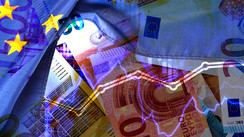The Tools of Dividend Investing
Investment methodologies differ drastically among individuals. While some may chase the allure of high-growth tech stocks, others might find comfort in the steady income generated by dividend-paying stocks. Notably, the latter group, consisting of value investors and income seekers, have specific metrics they rely on.
One such critical metric, especially for income-oriented investors, is the dividend yield. This financial ratio reflects the yearly dividends a company pays out in comparison to its stock price.
Deciphering Dividend Yield
The formula for calculating dividend yield is pretty straightforward. You divide the total annual dividends per share by the current price per share, expressing the result as a percentage. Dividend Yield = Annual Dividends Per Share / Price Per Share. If you want to estimate the current year's yield, you can use the previous year's dividend or multiply the latest quarterly dividend by 4 before dividing by the current share price.
But what does the dividend yield imply? It essentially indicates the cash flow you get back for every dollar you put into a stock. It’s a measure of the return on investment, excluding capital gains.
Let's assume company ABC's stock trades at $20, and they offer annual dividends of $1 per share. Simultaneously, company XYZ's stock is at $40, with the same annual dividend of $1 per share. ABC's dividend yield would be 5% (1 ÷ 20), whereas XYZ's yield would stand at 2.5% (1 ÷ 40). If an investor's aim is to supplement their income using their portfolio, they'd likely opt for ABC's stock over XYZ's, considering its higher dividend yield.
Generally, established companies with a long operational history tend to distribute a larger percentage of their earnings as dividends, often with a consistent track record.
The Implications of Excessive Yields
It's important to remember that a high dividend payment might hinder a company's growth potential. Each dollar a company distributes to shareholders is a dollar not reinvested for business expansion.
A high yield might warrant a little more investigation. Sometimes, a plunging stock price could artificially inflate the yield, creating a deceptive "value trap." Therefore, understanding the reasons behind a stock price drop is crucial. If the company is facing financial turbulence, it might be wise to sidestep such an investment after thorough research.
Consider the nature of the company too. Certain types of businesses like Master limited partnerships (MLPs) and real estate investment trusts (REITs) are legally obliged to distribute a large portion of their earnings to shareholders, which could result in higher dividend yields. These organizations might be a great fit for certain dividend investors, but this doesn't necessarily mean they are always a good investment.
Furthermore, some firms may temporarily inflate their growth costs to entice investors. Tracking dividend yields over time can help provide clarity on this front.

Factors Influencing Dividend Yield
Several factors like market conditions, stock prices, and company performance influence dividend yield.
The Impact of Stock Prices
The most significant factor affecting dividend yield is the company's stock price. An increase in share prices leads to a drop in dividend yields unless the company decides to raise dividend payouts. A diminishing yield due to higher stock prices isn't necessarily negative. It might suggest increased investor confidence and perceived investment value, with stock price appreciation offsetting lower yields.
Understanding Industry Trends
When assessing dividend yields, it's important to contrast yields of companies within the same sector or funds within the same category. This is because yields can differ substantially across various sectors, industries, and fund categories.
Consider how different sectors experienced contrasting impacts on their average
dividend yields during the Covid-19 pandemic. Some sectors, like consumer discretionary stocks, saw significant drops in average dividend yields. With the pandemic forcing consumers to focus only on essential spending, these companies earned less and subsequently lowered their dividends.
Conversely, sectors like energy stocks experienced higher average dividend yields as global economic disruptions drove up energy prices. This led to increased profits for oil and gas companies, which they shared with investors in the form of enhanced dividends.
Company Size and Growth
Typically, mature and well-established companies are more likely to pay dividends and have higher dividend yields compared to young, growing businesses. The latter often reinvest their profits for expansion instead of distributing dividends, which is why dividend investors are less inclined to include growth stocks in their portfolios.
Evaluating Company Fundamentals
While high dividend yields can be appealing, they could also signal issues within a company. A yield may rise when a stock price falls due to a slump in the company's earnings or negative investor sentiment.
Occasionally, struggling companies might boost dividends to increase yields and attract investors. But unless the company can revive its fortunes and sustain elevated payouts, these dividends may prove unsustainable.
The Takeaway
Dividend yield can serve as an effective yardstick when evaluating potential investments. However, a good yield doesn't always equate to a robust company. Investors must look beyond the instantaneous figure and consider the company's industry and its dividend yield trend over an extended period. The goal is to ensure consistency and avoid getting caught by one-time anomalies.





